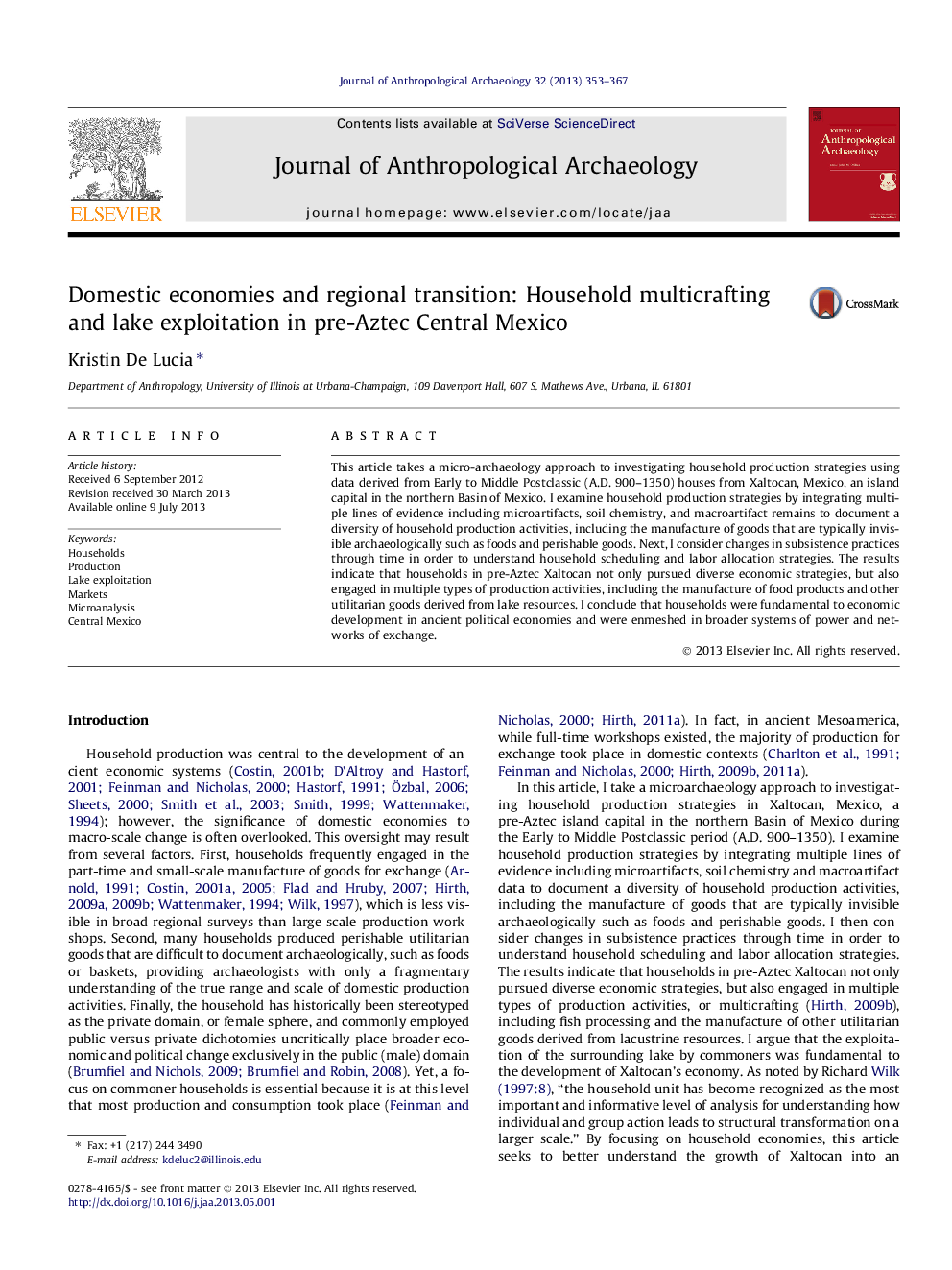| Article ID | Journal | Published Year | Pages | File Type |
|---|---|---|---|---|
| 10498700 | Journal of Anthropological Archaeology | 2013 | 15 Pages |
Abstract
This article takes a micro-archaeology approach to investigating household production strategies using data derived from Early to Middle Postclassic (A.D. 900-1350) houses from Xaltocan, Mexico, an island capital in the northern Basin of Mexico. I examine household production strategies by integrating multiple lines of evidence including microartifacts, soil chemistry, and macroartifact remains to document a diversity of household production activities, including the manufacture of goods that are typically invisible archaeologically such as foods and perishable goods. Next, I consider changes in subsistence practices through time in order to understand household scheduling and labor allocation strategies. The results indicate that households in pre-Aztec Xaltocan not only pursued diverse economic strategies, but also engaged in multiple types of production activities, including the manufacture of food products and other utilitarian goods derived from lake resources. I conclude that households were fundamental to economic development in ancient political economies and were enmeshed in broader systems of power and networks of exchange.
Related Topics
Social Sciences and Humanities
Arts and Humanities
History
Authors
Kristin De Lucia,
